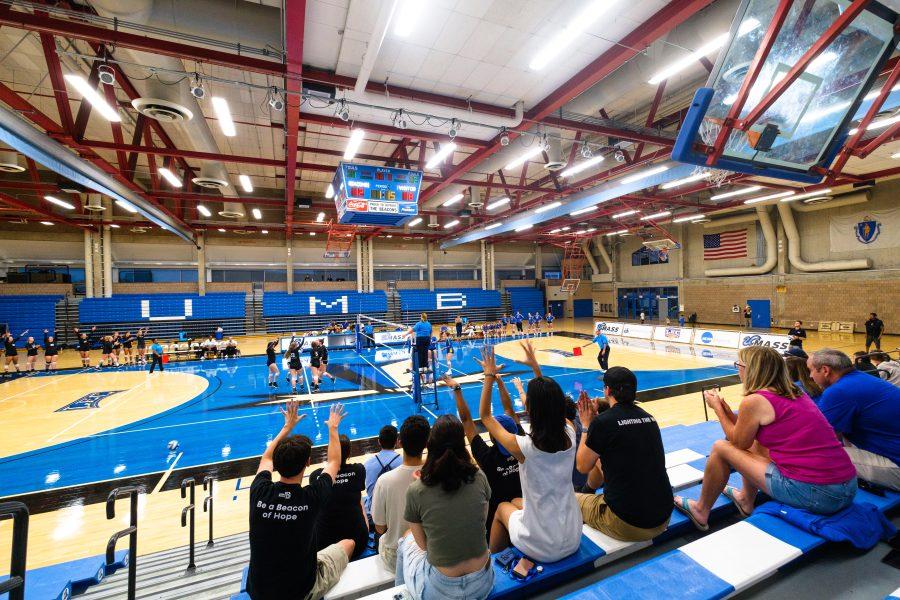Students may find themselves enjoying the space playing badminton with peers or enjoying a game of hockey or basketball played by the Beacons on the ice or on the court. Athletes may consider this their second home: Clark Athletic Center.
Like many other buildings in the UMass Boston campus, its often-repeated name holds the legacy of an inspiring and groundbreaking individual. In this case, the Clark Athletic Center recognizes and sustains the legacy of a defining female community member in the Dorchester area. The building was named after a woman by the name of Catherine “Kit” Clark, who was a resident of the Savin Hill neighborhood in Dorchester her entire life, beginning with her birth in 1919.
“Kit” Clark was a daughter of immigrants. Her mother was from Northern Ireland, while her father was from Scotland. She was involved in sports throughout her whole life and played tennis, especially on the courts located in Savin Hill. Said to have left a defining “impression in Dorchester,” the effects of her pure intentions and consistent work ethic are remembered by the many who worked with her (1).
Attributes that her contemporaries appointed her for included her ability to see the big picture and being a voice that people heard and respected. She always had a focus in building bridges between the community and outside connections to create power among the people.
Clark worked for Allied Appliances in Brookline as an officer manager, a position that put her in an executive position testing her character. The leadership skills she developed in this position lead her to become a Savin Hill activist. She became the President of the Savin Hill Neighborhood Association and long-term director of senior services at the Dorchester Neighborhood Houses as well.
Since she was aware of the benefit of sports in her life, one of her main focuses as a member of the Savin Hill Neighborhood Association was to improve the tennis courts where she had been able to play for many years. Clark also built basketball courts in the community. She was appointed to the UMass Board of Trustees in the ‘70s by Republican Governor Frank Sargent. For reference, UMass Boston was founded in 1964 and found Columbia Point as its permanent location in 1974 (2). This placed her strong character in a position of power during a time where the university was first finding its building blocks.
To continue her pursuit in providing athletic opportunities for the community, she “saw the potential for a campus recreation center that would be available to residents of Columbia-Savin Hill and Columbia Point” as Chris Lovett reflects in his 2014 article for the Dorchester Reporter (1). Clark advocated for the facility to be built, even though there were budget cuts and it was not a priority for other directives. She understood what the space would mean for the community, so she fought to ensure they would get it. She was a role model that exemplified how to transform the role she performed into that of a community leader.
First, she recognized the power to transform her surroundings. Then, she observed the community she was a part of and analyzed where they needed help in order to identify the programs she could advocate for.
Students can be inspired by Kit Clark to find practical use for the concepts they have learned in the classroom and to turn them into skills that may benefit their communities. Students may initially consider the various communities they are a part of, be it Columbia point, their hometown or country, then analyze aspects where the community may need help and how their knowledge and role can be applied in aiding their issues. Similarly, learning and understanding issues of their community and educating others about them is helpful.
In general, Catherine “Kit” Clark is a pure example of being a neighborhood person that helped their community thrive. A wonderful person to remember through the name of the athletic center that holds a variety of sports here at UMass Boston.
Special thanks to Jessica Holden, reference archivist for the University Archives and Special Collections who provided the references for this article. If students are interested in learning more about the history of UMass Boston, Dorchester or the Boston Harbor islands may contact the University Archives. They hold a wide variety of primary documents and articles open to the public and can be contacted through email at [email protected].(3)





















































